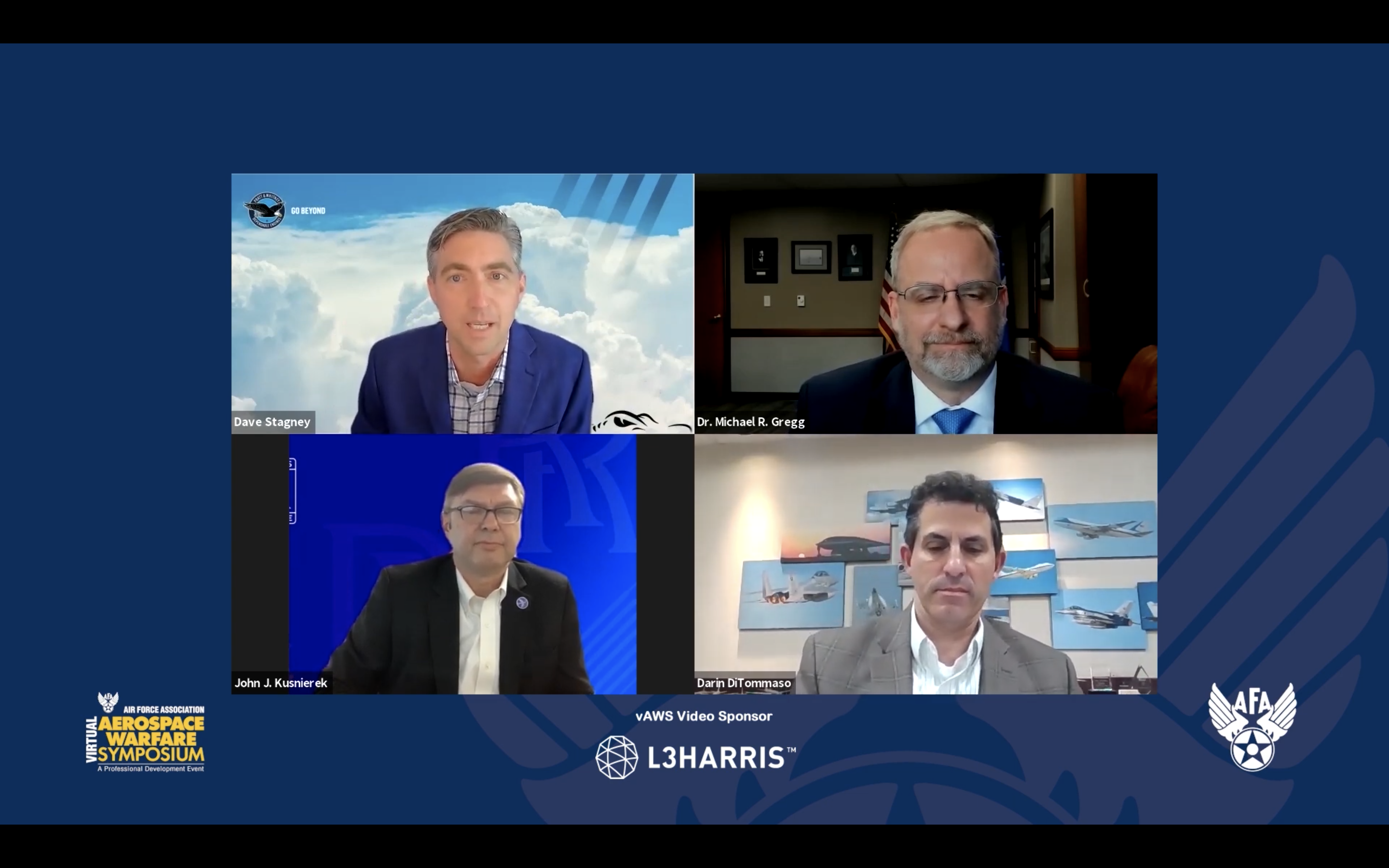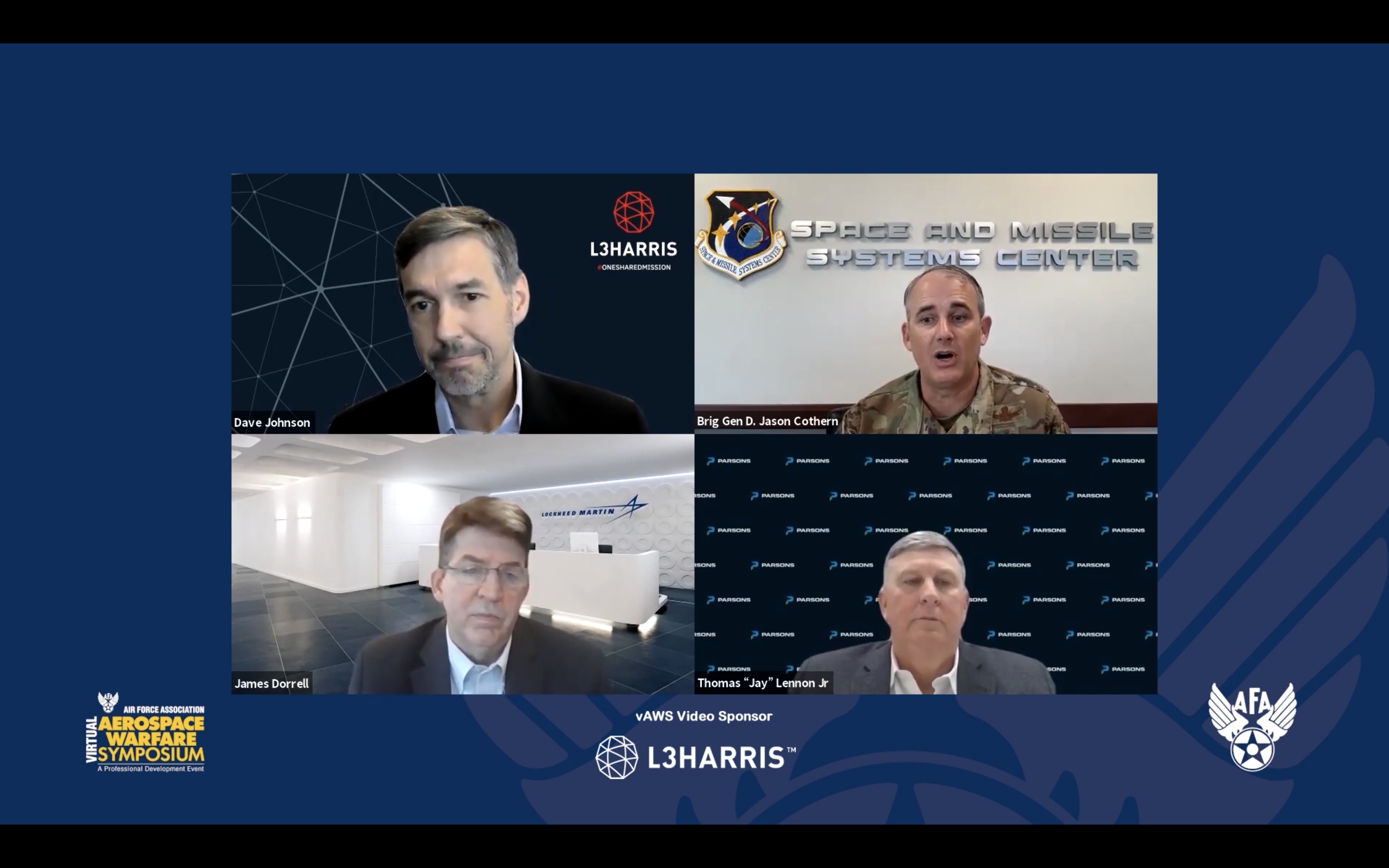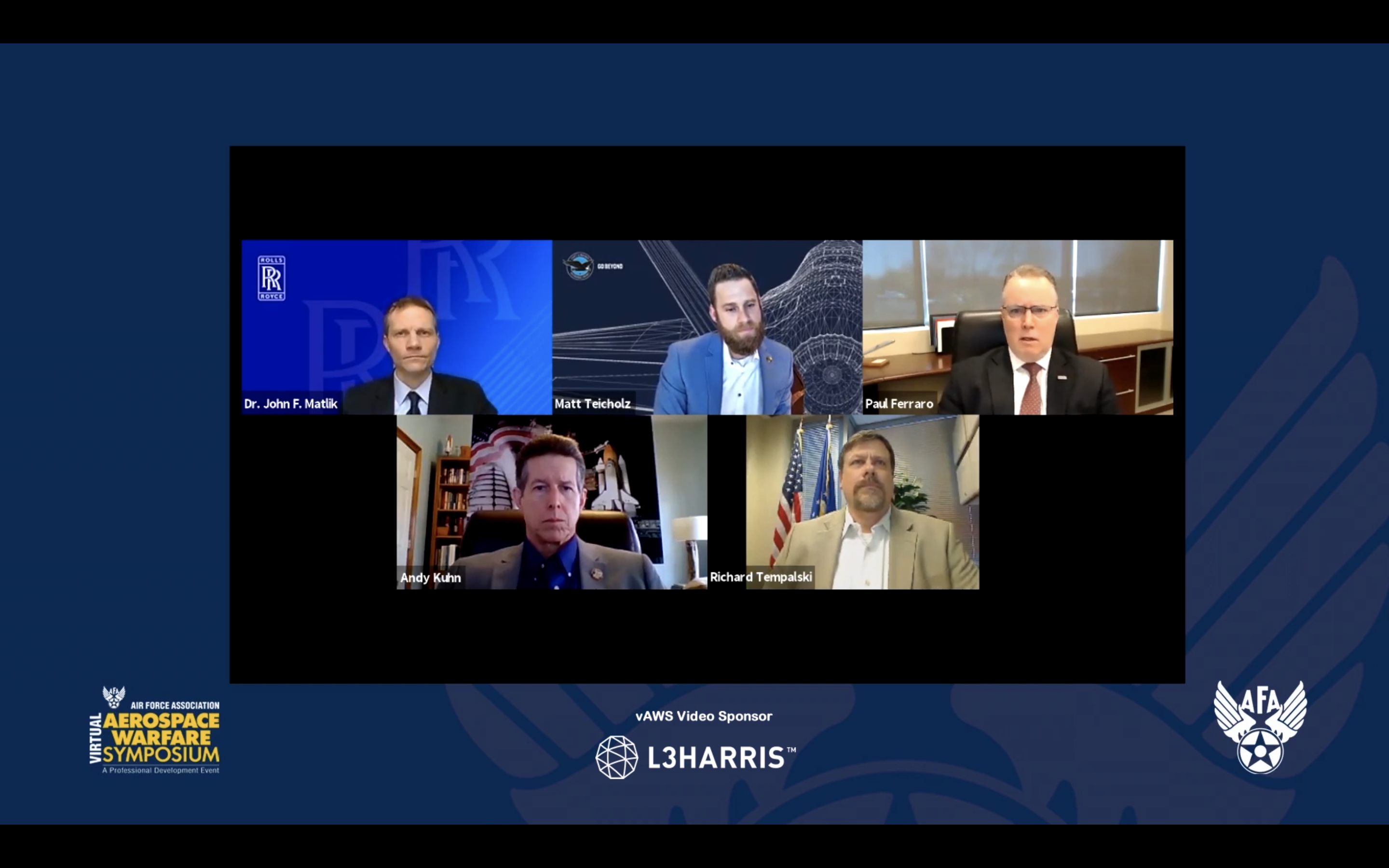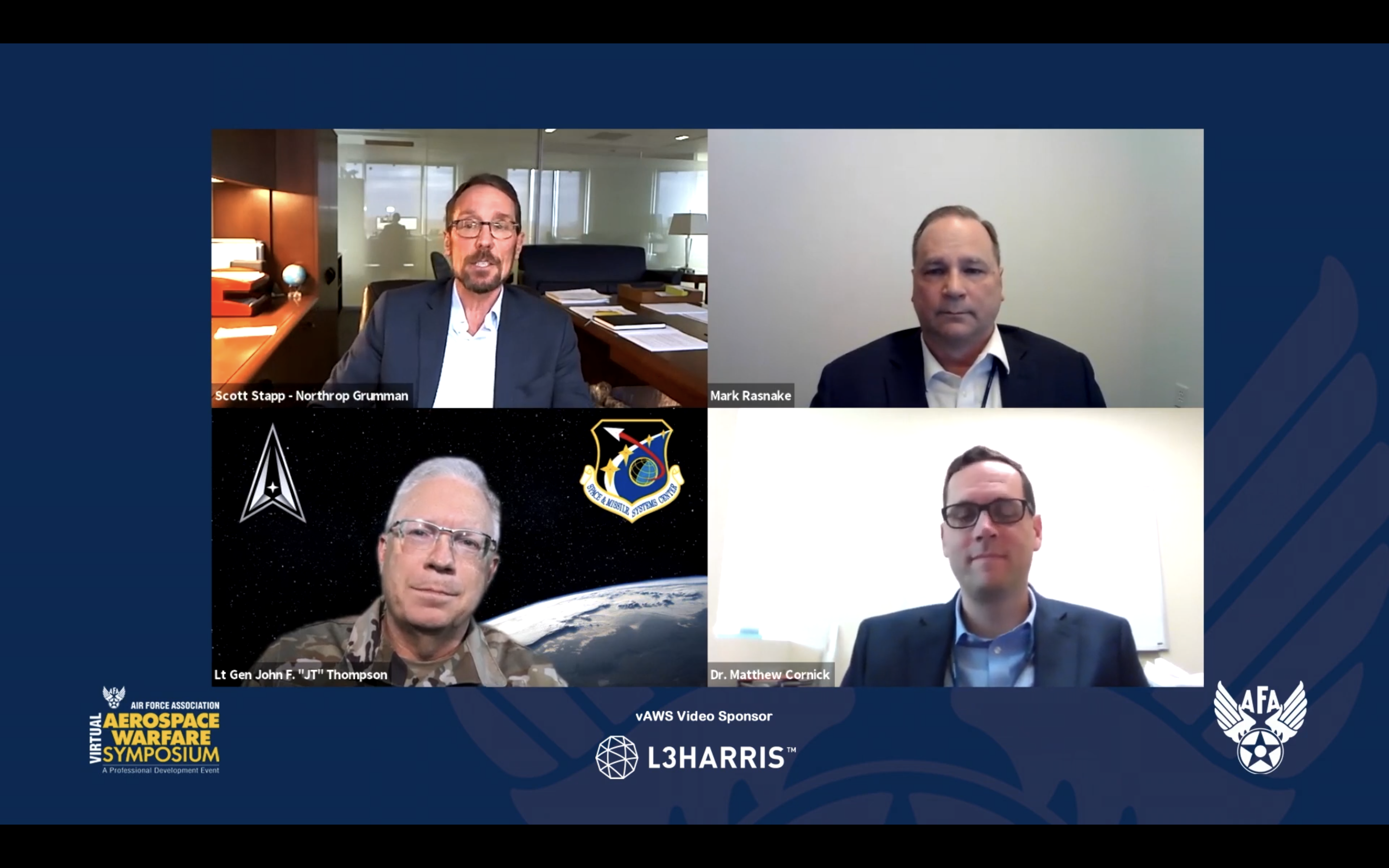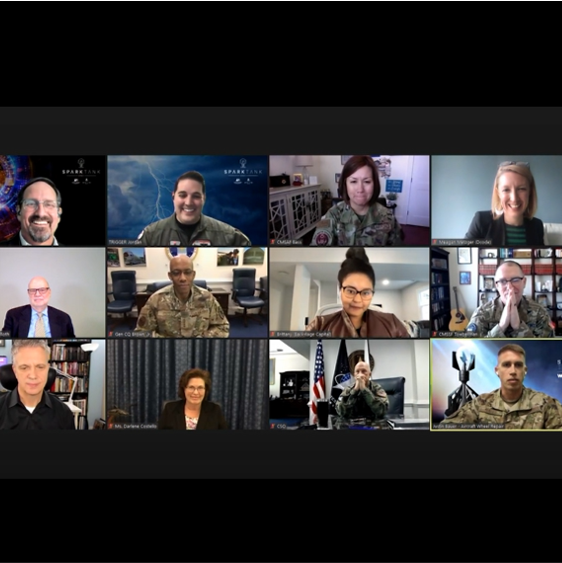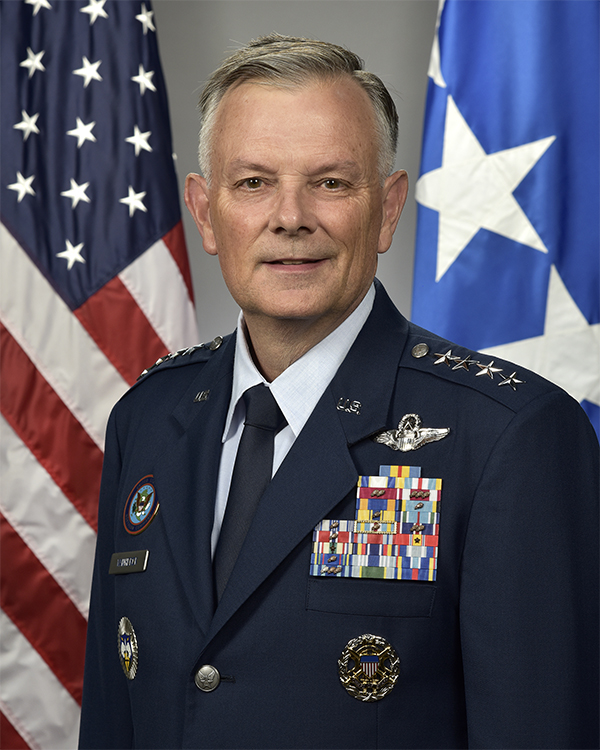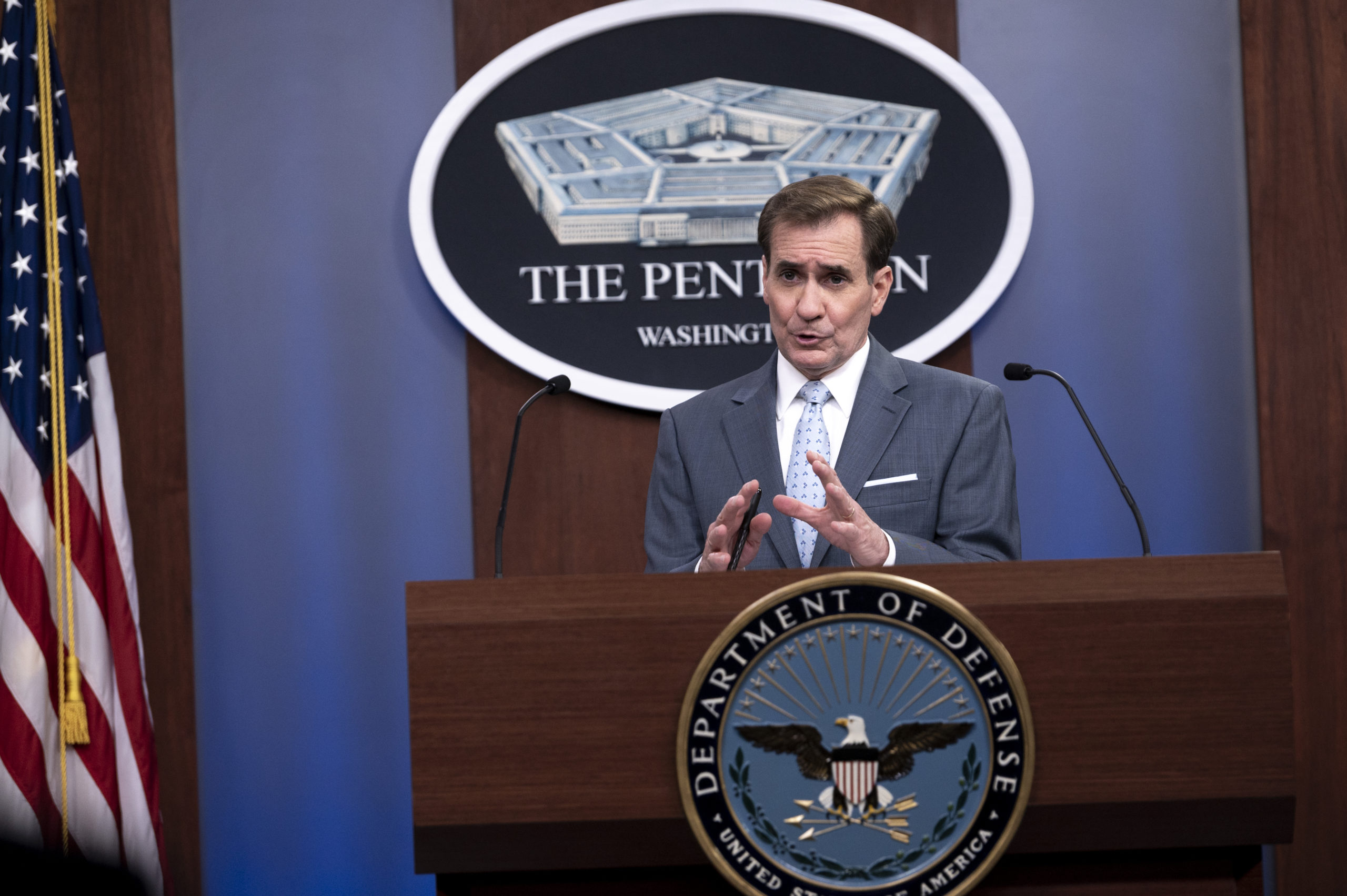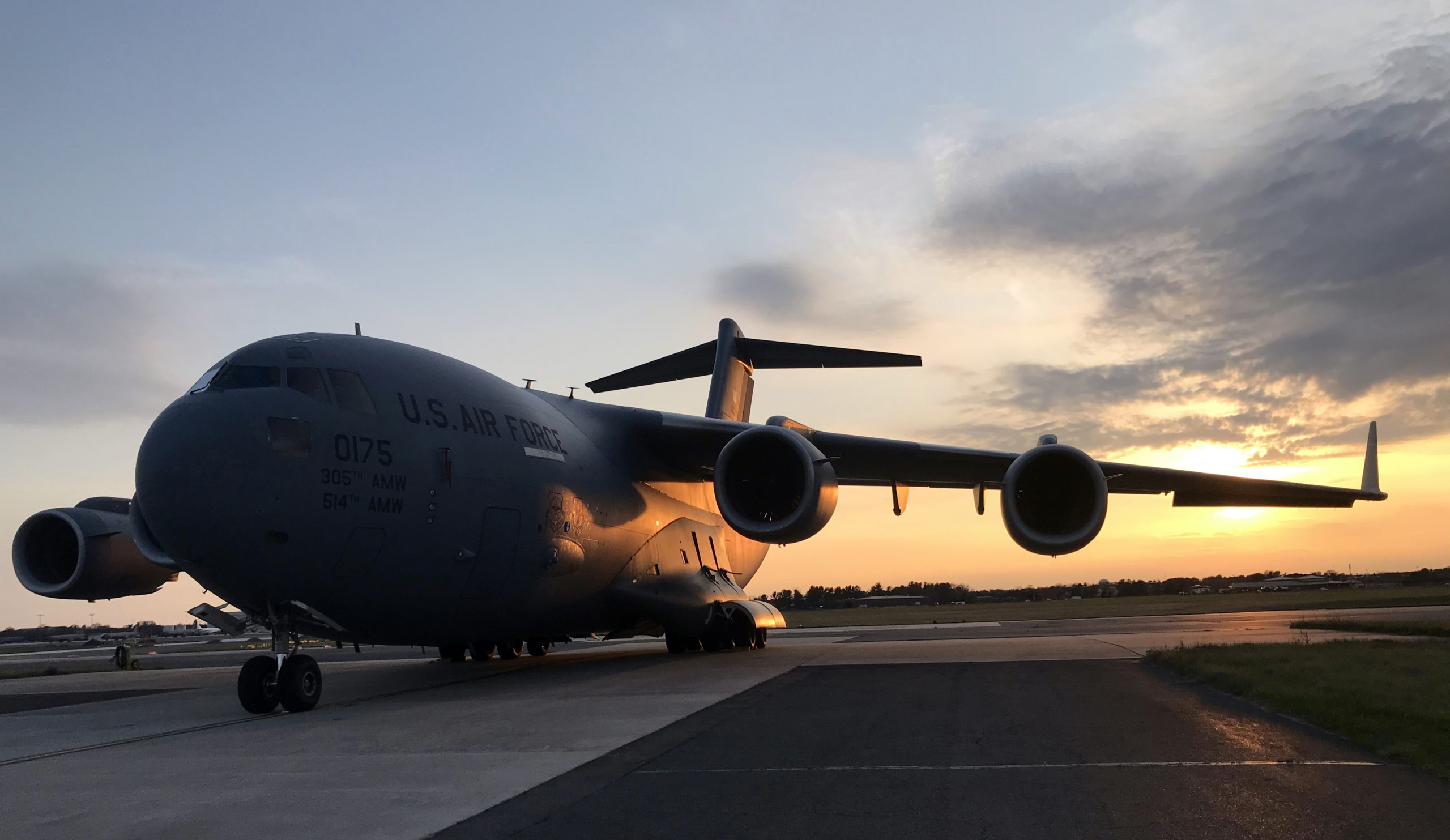Watch panelists Chris Flynn, vice president of Military Development and GATORWORKS at Pratt & Whitney; John J. Kusnierek, senior vice president of LibertyWorks research and technology at Rolls-Royce North America; Darin L. DiTommaso, vice president of military engineering at GE Aviation; and moderator Michael R. Gregg, director of the Air Force Research Laboratory’s Aerospace Systems Directorate, take part in the “Mission Domain Live Engagement—Propulsion” session from AFA’s 2021 virtual Aerospace Warfare Symposium.
